Data Modelling Assignment: Website Launch Of “bookedbook.com”
Question
Task:
Scenario (The Case)
Book reading is an extremely healthy activity. It has many benefits and above all, it is exciting, entertaining and a great way to release stress, anxiety and depression. These are not the only benefits. Above everything; book reading helps in mental stimulation; improvement of memory and it also helps in improving language skills. It also certainly allows an individual to help concentrate better. In short, the benefits are enormous.
In recent times we have been introduced to technologies such as laptops, cell phones, tablets and other technologies but to date, the conventional book reading is something that people cherish and enjoy in its own way. It is believed that a “book has no substitute” and book readers from all over the world firmly agree to this. Cynthia, a young technopreneur and a book lover; plans to open an online lifestyle substitute business named ‘bookedbook.com’. This online business is Cynthia’s dream. Cynthia has formally registered her new company, everything is in place from a legal perspective and the company now has ample funds to develop an online website that would support Cynthia’s business idea.
bookedbook.com would be an extremely interesting website. This website will require user registration. Children would also be able to register but their registration would be accompanied with some details of parents and their contacts. The website would only offer individual registrations and proof of ID would be a must when registering. bookedbook.com will offer quarterly, biannual and annual memberships.
The whole idea is very simple. Registered book readers would be able to launch the books that they own and which they would want to give away to other registered members. A book launch would require complete details of the book. It would also require the user to provide the address where the book is available. Once the book details are provided by the subscriber (registered book reader) the company’s content manager would approve the book launch request. Once approved, the book would be available for all users for them to review and/or acquire. The review process would allow all users to provide feedback and comments about the book and would also allow users to rate the book. The acquisition process would allow book readers to acquire the book from the book owner. The users planning on acquiring the book, would make a request for book acquisition. This request would help facilitate book reader meetup and exchange books. Once the book would be acquired the book owner would have the option of removing the book.
bookedbook.com will also allow users to interact with one another via messaging and chat rooms. Users will be given an option to decide the mode of communication that they would prefer. Off course all chat request, messages and acquisition request and all other messages are also provided to the user via email that is provided at the time of subscription.
The website would also provide a portal to the administrator for data analytics. Cynthia is keen to observe and analyse every type of data that is obtained at this website. For example, she wants to know which book is being exchanged mostly, she wants complete customer analytics, book exchange analytics, analysis of book reviews and rating and other similar portals for data analysis.
As soon as the user registration would expire, all book launch requests would be halted by the system and the users interested in acquiring the book(s) placed by the user whose registration is about to expire would be sent an email that these book(s) are no longer available. Users would be asked to renew their subscription 15 days before the registration expiry date to ensure continuity of services.
Cynthia does not want this website to be a book exchange platform only. She also wants the website to provide a platform for all the users to arrange for an online and face to face meetup. She wants to ensure that any book meetup events that bookedbook.com plans should be available to its users. Users should be able to register for these events which may be paid or unpaid. She feels that these meetups would be a great source of fun for book lovers and also a source of marketing for the company.
In order to ensure this website stays profitable Cynthia also wants this website to allow book authors from all around the world to advertise their books on bookedbook.com. This functionality, however, would not require book authors to register with bookedbook.com formally. Book authors would be able to just fill in a ‘book show request form’, provide their details, provide the details of their book and a credit/debit card number. They would also provide information about the time period for which they want their book to be advertised on the website. Advertisement requests would also be approved by the content manager. Once approved, the book authors would be charged and the advertisement would go live. The ad would be removed by the system automatically once it reaches the end date. bookedbook.com will only allow advertisement of up to 5 books at a time. All advertisement requests would be entertained by the system on a first come first serve basis. The advertisement functionality is also available for subscribers. In this case the fee for advertisement is very minimal.
Cynthia wants this website to be upgradable and secure. She wants simple and modern interfaces and also wants a mobile application version of this website.
Requirements to be covered in the data modelling assignment:
With an in-depth understanding of the functional requirements of the System, you are now required to perform further analysis through process and data modelling. In doing so, you also need to provide a preliminary data storage design for the System.
Both process modelling and data modelling can be used to provide deeper understanding of a new System. Thus, they are an integral part of System Analysis. Process modelling describe processes – i.e. the sequence of activities that people do; while data modelling seeks to describe the data flows through those processes. Data flow diagrams (including context diagrams) and entity relationship diagrams are the most common process and data modelling techniques used in industry.
Please complete the following tasks:
Task 1. Create a Context Diagram for the given case study.
Task 2. Create and document a Level 0 Data Flow Diagram (DFD). The Level 0 DFD should contain all the major high-level processes of the System and how these processes are interrelated.
Task 3. Select three important processes from Level 0 DFD, decompose each of the processes into a more explicit Level 1 DFD.
Task 4. For the given case study, provide an Entity Relationship Diagram (ERD).
Task 5. For the given case study, identify the data stores including the files that are not part of ERD.
Task 6. Translate the ERD you developed in Task 4 into a physical relational database design. Document database tables and their relationship in MSWord file. Normalise your database design to the Third Normal Form (3NF).
Please note that your responses to the tasks above must relate to the case study provided.
Answer
Introduction
This report on data modelling assignment is focused on delivering knowledge regarding the design of website solutions for Cynthia, who wants to investigate her business and launch a website called bookedbook.com for book lovers. The study will investigate the various design steps that will be beneficial in order to generate a detailed discussion regarding the business scenario(Sciore, 2020). To address the operational needs of the business, it is required to accept a systematic approach for modelling the data and information obtained from the business case. This study is associated with the designing of different procedures that will be beneficial in this regard to develop a systematic idea of the modelling of the system. As a result of that, the system requirements can be analysed in the process with the implementation of DFD and ER diagrams.
Aims and Objectives
Aims
The fundamental aim of this study is to generate deeper insights regarding the comprehensive requirements generated for developing bookedbook.com as per the business case. The idea in this study will have a major focus on reflecting the functional and non-functional requirements that will be necessary for the system. This analysis will allow learning different tools and techniques that are relevant in the process of data modelling and will be used to address the aspects of data storage.
Objectives
The major objectives that are highlighted in the study include:
To identify a website solution for book lovers and extend the process in an online dimension with the launch of bookedbook.com.
To analyse solutions for book lovers through book launch, book subscription and book advertisement process.
To validate the various requirements of the new system, including functional and non-functional.
To learn different tools and techniques that will provide deeper insights regarding the design and modelling of the system.
Business Case Overview
Cynthia, a young entrepreneur, wants to expand technological solutions for book lovers. Science book reading is a great way of entertainment and pleasure for many people; she wants to simulate this process as an online lifestyle activity through business substitutes. In order to provide a conventional reading platform for book lovers, Cynthia proposed the online website bookedbook.com which will allow different activities for book lovers.
The website will offer an excellent platform for children to adults who can access the books for their reading using the subscription process. Other than that, it will provide opportunities for many of the rising authors to upload their books subscription in order to access feedback and review from different book readers(Date, 2019). The authors need to enter the book access event. Furthermore, this book exchange platform has another additional feature of advertisements of books. The book advertisements are made for a limited period of time. After the service expiry of the advertisements, those are removed from the website. This facility is also available to book lovers who have subscribed to bookedbook.com.
Assumptions of Business
Initially, Cynthia has made a few assumptions for this new business that will be launched through the online platform of bookedbook.com for book lovers. After the global pandemic of COVID 19, restrictions were imposed on the global population regarding the attendance of public places. Thus, it will be quite a beneficial option, in this case, to provide an online medium for book lovers to access and review books at their convenience.
There will be a login process for the users to log in to the website.
There will be a process of book launch requests for the authors to launch their books for customers.
There will be a data analytics team who will be delivering the analysis of the website performance,
There will be a book subscription process where the users can subscribe for acquiring books.
There will be a book acquisition process in order to facilitate the users with the book acquisition requests from the online platform.
There will be options for the users in order to advertise books for a short duration of time on the digital platform.
The users can see this online platform for connecting with people during book meetups.
Major Processes
The major processes that are essentially required to incorporate in the system of bookedbook.com as per the proposed business case scenario are represented in this section.
User registration
The user opens the website and registers with their credentials in bookedbook.com. After proper authentication and validation of user credentials, the users are permitted to successfully register(Apress, 2020). After successful registration, the users can log in to the system at their convenience.
Book Launch
The user can request a book launch event through this function. In this process, the user can provide the details of the books after subscription and then wait for the approval of the book launch request from the content manager of bookedbok.com(Zygiaris, 2018). After the approval, the customers will be able to access these books in order to provide feedback and comments and rate the book as well.
Book Acquisition
After the successful book launch, the book readers are allowed to avail themselves of an option for communicating directly with the book readers. They can have chat requests or acquisition requests for book authors to provide them with the opportunities to read the books at the time of subscription.
Data Analytics
The data analytics team in this process will perform the major analytics in order to analyse the performance of the website. Through this process, Cynthia wishes to explore the details of the analysis of book reviews, book exchange analytics and customer analytics.
Book Subscription
The panel created for book subscriptions allows the users to pay for book subscriptions. In this process, the users get the option for proceeding with a book subscription as per their choice of time and price(Hogan, 2018). As per their chosen time and amount, they get the book launch, book review and book advertisement facilities in bookedbook.com.
Book Advertisement
In this process, the user's login into the system to avail the option for book advertisements. This option is created as an additional feature for book lovers to publish their books for a limited period of time. After the service expiry, the ads will be removed from the platform.
Face to Face meetup
This process provides opportunities for different users to book meetup events. Through this website, the authors and the book readers can directly communicate and share their views regarding the books. This will be a good process of marketing for this digital platform.
Task 1: Context Level Diagram
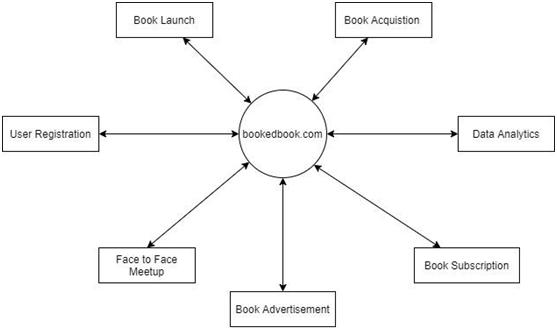
Figure 1: Context Level Diagram
(Source: Created by Author)
In this task, the diagram represents the context level architecture of the model that will be used by bookedbook.com. The representation of the context level diagram is used to provide an overview of the business architecture that has been proposed by Cynthia for his dream project bookedbook.com. With the use of the context diagram, it will be beneficial to determine and clarify different boundaries and the process of flow of information among the entities(Coronel & Morris, 2018). The overall system architecture is represented in this section as a single process using the context level diagram.
Task 2: Level 0 DFD
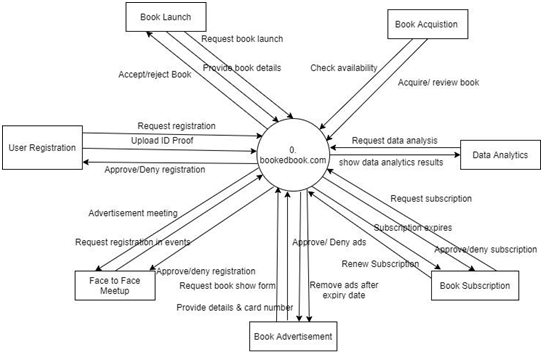
Figure 2: Level 0 DFD Diagram
(Source: Created by Author)
This task provides an insight architecture of the overall system that has been proposed for bookedbook.com. In this process, the extension of the context level diagram is considered in order to obtain the Level 0 DFD diagram. The above figure illustrates the representation of the system architecture at a glance that shows the single princess in high level and its relationship with different entities. The flow of data is represented in this section by extending the context level diagram. As stated by Pearson (2020) in order to obtain the complete system, it is required to analyse the different entities along with the internal flow of information that will help to design the Level 0 DFD as per the business case scenario.
Task 3: Level 1 DFD
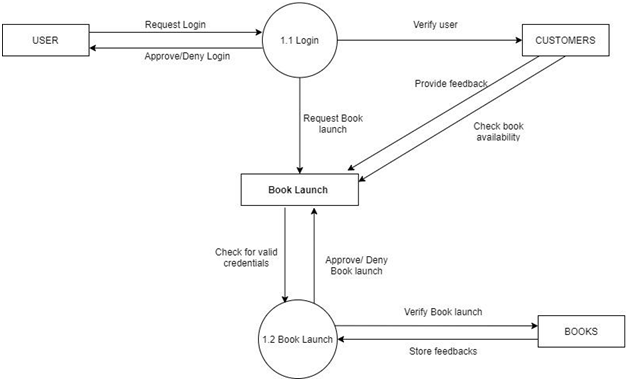
Figure 3: Level 1 DFD Diagram for Book Launch Process
(Source: Created by Author)
In this diagrammatic representation, the exploded view has been obtained for the Book Launch process that is integrated into the system for bookedbook.com. The figure provides a brief insight into the process of conducting a book launch request after the login process. After the user login, the user will be redirected to the request for the book launch (Spickard, 2017). The details of the nook launch process will be stored in the Books and Customers database.
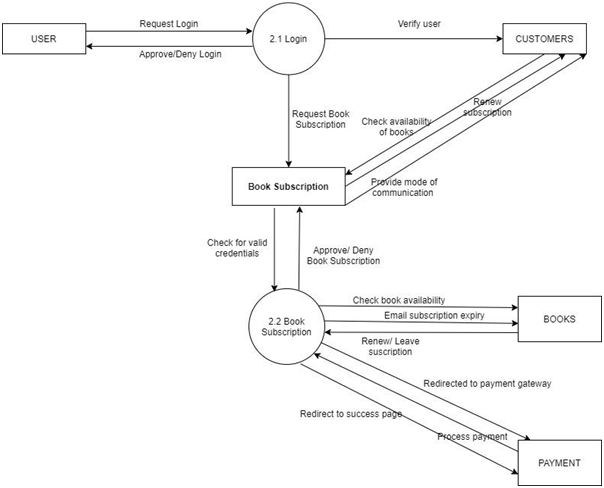
Figure 4: Level 1 DFD Diagram for Book Subscription Process (Source: Created by Author)
In this diagrammatic representation, the overview of the Book subscription process is represented. After the primary verification of the user credentials in the login process, the user is redirected to the subscription page, where they can check for the book availability (Sedkaoui, 2018). They can apply for the payment of subscriptions for book requests. The data of payment transactions will be stored in the Payment database. Other than that, the Books database and Customers database is used in order to apply subscriptions on the available books and also provide reviews on the available books for the customers. After the subscription expires, the user gets a subscription expiry email in order to renew the subscription.
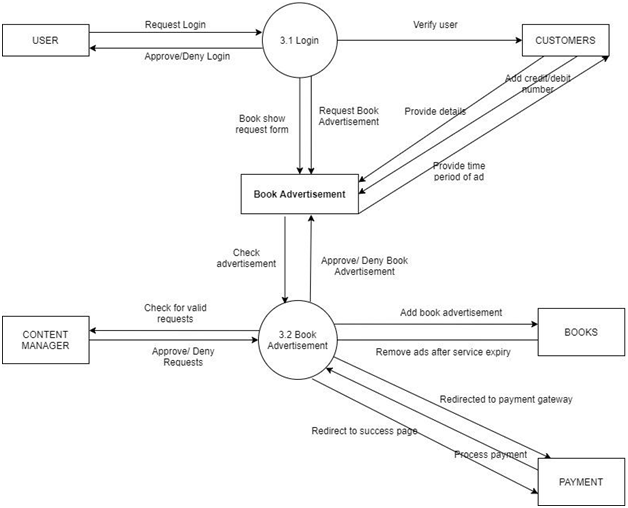
Figure 5: Level 1 DFD Diagram for Book Advertisement Process
(Source: Created by Author)
In the above-represented diagram, another level 1 DFD has been created for the Book advertisement process as proposed for boookedbook.com. After the verification of the credentials in the Login process, the user looks for the Book advertisement option. In this Book advertisement section, the user gets the opportunity to advertise their written books or articles for a specific period or duration of time. For this process, initially, they need to proceed with the payment process. The database that is involved in the process includes Books, Customers, Payment and Content Manager. The content manager plays a significant role in approving the book advertisement requests after valid transactions and requests(So et al., 2020). After the service expires, the advertisement of the books is removed from the website.
Task 4: Entity Relationship Diagram
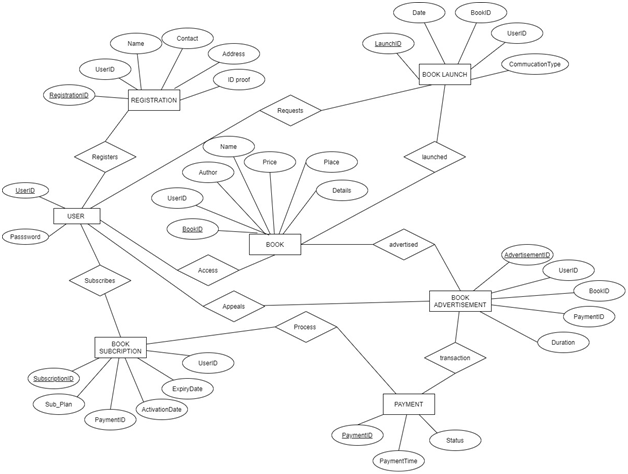
Figure 6: Entity Relationship Diagram
(Source: Created by Author)
The diagram represents the major entities that are involved in the process of developing the bookedbook,com online platform. Along with that, the associated attributes are also highlighted in the process. For this process, the web-based application has been designed to show the major relationships that are existing in the system.
Task 5: Identification of Data Storage
The database schema in this process has been design in order to show a system that can meet the primary needs for the book organisation. As a result of that, this schema has been modelled to show the capabilities of this system to store high amount of data in cloud storage with a better security feature(Hasman, Gallos, &Liaskos, 2018). It also provides high scalability in the process to meet the internal and external needs of the online platform.
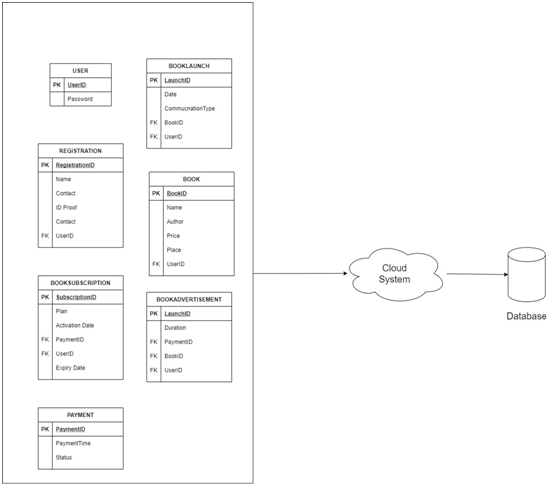
Figure 8: Database Schema
(Source: Created by Author)
Task 6: Physical and relational database design using 3NF
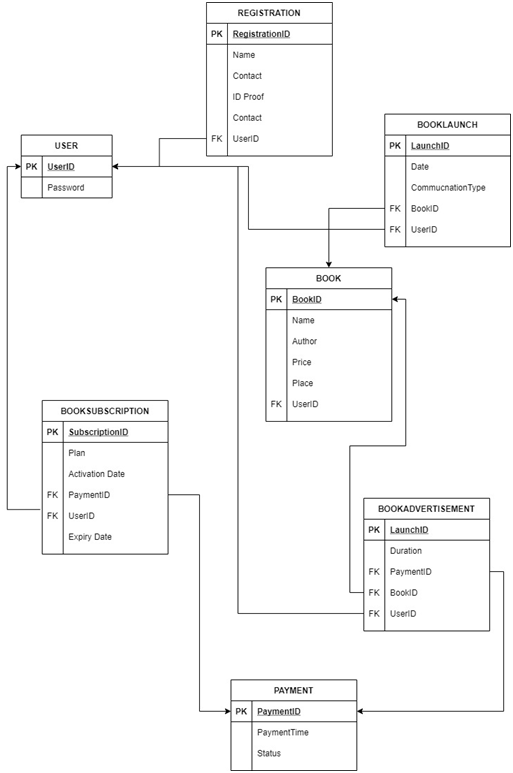
Figure 8: Relationship Model design to 3NF
(Source: Created by Author)
|
ENTITY NAME |
PRIMARY KEYS |
FOREIGN KEYS |
|
USER |
UserID |
|
|
REGSITRATION |
RegistrationID |
|
|
BOOKS |
BooksID |
UserID |
|
PAYMENT |
PaymentID |
|
|
BOOK SUBSCRIPTION |
SubscriptionID |
UserID, PaymentID |
|
BOOK LAUNCH |
LaunchID |
BookID, UserID |
|
BOOK ADVERTISEMENT |
AdvertisementID |
UserID, BookID, PaymentID |
Conclusion
The overall study provided a modelling solution regarding the design and analysis of bookedbook.com, as proposed in the case study of the business. The study has addressed the major requirements that have been proposed by the organisation in order to proceed with the system design. Other than that, extensive knowledge has been created in this designing process regarding the functionalities of Level 0 DFD and LEVEL 1 DFD in order to understand the different processes involved in the business scenario. It further helped in the identification of the major entities that provided the scope of designing relational databases and further designing of the attributes involved in the process.
References
Sciore, E. (2020). Database design and implementation (2nd ed., Ser. Data-centric systems and applications). Springer. Retrieved October 29, 2021 https://lesa.on.worldcat.org/v2/oclc/1143629675
Apress. (2020). Database design best practices : building scalable data solutions to withstand the test of timeVersion (1st edition.). Retrieved October 29, 2021 https://lesa.on.worldcat.org/v2/oclc/1192531771
Coronel, C., & Morris, S. (2018). Database systems (13th ed.). Cengage. Retrieved October 29, 2021 https://lesa.on.worldcat.org/v2/oclc/1202473757
Date, C. J. (2019). Database design and relational theory : normal forms and all that jazz (Second). Apress. Retrieved October 29, 2021 https://lesa.on.worldcat.org/v2/oclc/1134404715
Hasman, A., Gallos, G., &Liaskos, J. (2018). Data, informatics and technology (Ser. Studies in health technology and informatics ser, v. 251). IOS Press, Incorporated. Retrieved October 29, 2021 https://lesa.on.worldcat.org/v2/oclc/1050754858
Hogan, R. (2018). A practical guide to database design, second edition (Second). CRC Press. https://lesa.on.worldcat.org/v2/oclc/1022754337
Pearson. (2020). Database fundamentals : livelessons. Retrieved October 29, 2021 https://lesa.on.worldcat.org/v2/oclc/1137802606
Sedkaoui, S. (2018). Data analytics and big data (Ser. Information systems, web and pervasive computing series).Data modelling assignment ISTE, Ltd. Retrieved October 29, 2021 https://lesa.on.worldcat.org/v2/oclc/1037945978
So, A., Joseph, T., John, R., Worsley, A., Asare, S., & Safari, an O'Reilly Media Company. (2020). The data science workshop (1st ed.). Packt Publishing. Retrieved October 29, 2021 https://lesa.on.worldcat.org/v2/oclc/1143015041
Spickard, J. V. (2017). Research basics : design to data analysis in six steps. SAGE Publications. Retrieved October 29, 2021 https://lesa.on.worldcat.org/v2/oclc/1136071770
Zygiaris, S. (2018). Database management systems : a business-oriented approach to oracle, mysql and ms access (First). Emerald Publishing Limited. Retrieved October 29, 2021 https://lesa.on.worldcat.org/v2/oclc/1048428900












